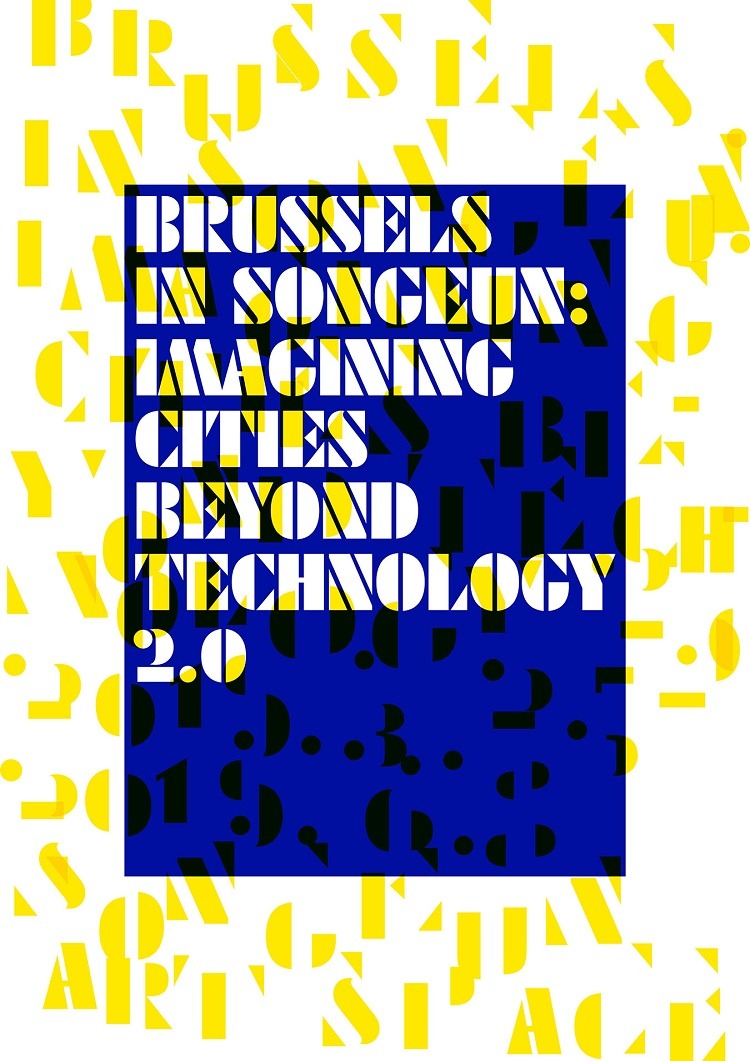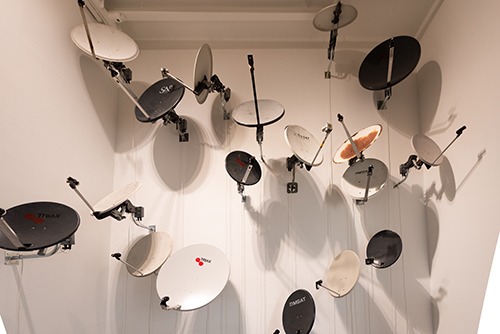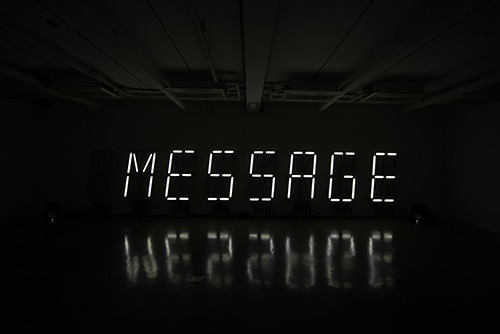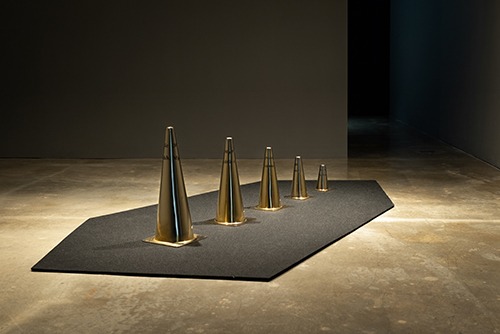
| Period| | 2019.03.25 - 2019.06.08 |
|---|---|
| Operating hours| | 11:00 ~ 19:00 |
| Space| | SongEun Art Space |
| Address| | 6, Apgujeong-ro 75-gil, Gangnam-gu, Seoul, Republic of Korea |
| Closed| | Sun. |
| Price| | Free |
| Phone| | 02-3448-0100 |
| Web site| | 홈페이지 바로가기 |
| Artist| |
유네스 바바알리(Younes Baba-Ali),피에르 장 지루(Pierre Jean Giloux),랍[오](LAb[au]),라빗시스터즈(LarbitsSisters),펠릭스 루크 산체즈(Félix Luque Sánchez),안느마리 마스(AnneMarie Maes),뮌,박혜민,비트 스트뢸리(Beat Streuli),토마스 윌먼(Thomas Willemen)
|
정보수정요청



|
|
Exhibition Information



Brussels in SongEun: Imagining Cities Beyond Technology 2.0 assembles a group of eight Brussels-based and four Korean contemporary visual artists. This group exhibition is presented within the category of SongEun ArtSpace’s annual program of country-specific exhibitions which invites guest curators from a country to present the work of promising artists from the country, such as Delfina in SongEun: Power play (2018), Indonesia in SongEun: Mes56 – Keren Dan Beken (2016), and Italy in SongEun: We Have Never Been Modern (2014). The main theme of the projects on display is the concept of smart cities. Contemporary cities are magnets that attract growing numbers of people, resources, ideas, opportunities and knowledge. Today, 50% of the world’s population lives in global areas. By 2050, this percentage will have increased to 70%. While the application of new digital technologies in urban spaces has been celebrated for its ability to increase citizens’ well-being, various experiments around the world have revealed how we forget to examine the impact, on various levels, of this digital development in the cities of the future, including on the psychological, ethical, philosophical, social and political level. Brussels in SongEun: Imagining Cities Beyond Technology 2.0 engages in a social-political discourse that involves citizens and various interest groups on the following question, namely what constitutes a desirable smart city in an era of technological revolution? 2F LarbitsSisters Artist duo based in Brussels Bitsoil.tax/campaign is an internet-based installation that deploys its activity both online and offline. The project interacts with trolling social media bots on Twitter and an offline installation. Bitsoil.tax/campaign is designed as a critical tool to restore a fair balance in the digital economy, where the wealth tends to be concentrated in the hands of a few big companies. The artwork aims to mobilize users of social media platforms to claim a micro tax on their data (or “bitsoil”) and to call for a fair distribution of wealth. The work engages with one of the most pressing problems of the digital economy: the inequalities involved in the mining of user data for profit. The digital economy earns billions on people’s data. More than 2.5 trillion bytes of data are generated daily. Bitsoil.tax/campaign is a call to take action and raise awareness about new types of redistribution models that might balance the data-driven economy at a time of datafication of everything and in which cities are becoming major producers and consumers of data. Younes Baba-Ali (b. 1986, FR) Lives and works in Brussels In Paraboles Baba-Ali explores the physical and metaphorical relationship between migrants and their host communities. He installs the popular cultural trope of the satellite dish in the white space of the gallery. This object adorns the exterior facades of migrant housing complexes in European cities, allowing them to connect with ‘home’, through televised images and sound. By reversing the location of the dish from outside to inside, Baba-Ali disrupts its ability to obtain a signal. It must therefore move from side to side in a futile attempt to properly perform its function. Through this subversive act of manipulation, Baba-Ali attempts to raise awareness about the impossibility of locating ‘home’, a situation that many migrants find themselves in, where they exist in a state of limbo between two zones, with a weakened connection to ‘home’ akin to the defunct operation of the satellite dish. By re-imagining this scenario, Baba-Ali highlights how migrant culture has mutated and been assimilated, sometimes involuntarily, and is no longer able to connect properly through typical channels of communication. 3FA AnneMarie Maes (b. 1955, BE) Lives and works in Brussels In the bio-art installation Cabinet #004: Future Archaeology (The Temporal Duration Through Which The Future Is Founded In The Present) AnneMarie Maes presents a Cabinet of Curiosities, a ‘Wunderkammer’. She appropriates archaeological and other scientific methods of collecting and ordering for the presentation of diverse artefacts. Every object presented on the laboratory tables is the outcome of a particular experiment. The bizarre biomorphic artefacts add a specific rhythm to the installation, but they stand in stark contrast to the strict geometry of the laboratory architecture bathing in pink light: hard and soft oppose each other. In her work AnneMarie Maes adapts scientific methods and biotechnology to explore living systems as artistic subjects. Recently she started a new research project that explores the creation of bio-plastics made out of bacteria and algae. Besides being an alternative for plastics, these new materials can also become alternative energy sources or to be used in the construction industry. Future Archaeology offers a concrete starting point for an exploration of possible futures through artistic research on material science and biotechnology. Navigating between a blueprint and a proof of concept, the experiments presented in this installation can be seen as an artifact from the future, a fragment of a world to come. Pierre Jean Giloux (b. 1965, FR) Lives and works in Brussels Invisible Cities is a tetralogy, comprising various portraits of Japanese cities, namely Tokyo, Yokohama, Osaka and Kyoto. In this film cycle, real imagery — filmed and photographed — is superposed over computer generated imagery, echoing contemporary Japan in which reality and the virtual world constantly encounter and blend in with each other. Invisible Cities ends with a film called Stations, which is a journey through the countryside around Osaka, the Kansai. It features a virtual reconstruction of the world expo in Osaka in 1970, the architecture of which was the epitome of Metabolism. This utopian movement, which was launched by Japanese architects and artists in the sixties, helped underscore the belief in technology as a source of progress in the public’s imagination. After crossing through Kyoto, we will discover ‘Biwako Machi’, a virtual smart city that was ‘built’ on the banks of Lake Biwa, according to the principles of the Kyoto Protocol. This city, which consists of habitable units, is supplied with wind, hydraulic and solar energy and uses novel information and communication technologies to regulate its energy flows. The juxtaposition of these two utopias, i.e. the Metabolist movement in modern times and the other utopia which is so much more in tune with 21st century ecological concerns, allows us to see how societal challenges have evolved in the past fifty years. ‘Biwako Machi’, which the artist designed with the architect Manual Tardits, questions whether smart cities could provide an urban planning answer in the Anthropocene era. 3FB Je Baak (b. 1978, KR) Lives and works in Seoul Iris recognition, 3d printing and virtual reality technologies applied to this work are the main pillars of the 4th industrial revolution. With the advent of the latter, mankind has never been so reliant on technologies, facing both hope and fear for what the future holds for us. Technologies that will shape the future will definitely follow the values upheld by mankind. However, what sparks fear is whether the minimum values we practice are truly based on a consensus. At a time when mutual dialogue and understanding have become more relevant than ever before, people are displaying conflicts and frictions. In contemporary Korean society where conflicts and hate among different relationships are revealed to the extreme, conceptualization of smart cities seems to have lost its direction. After all, it is the human to human relationship, that is, understanding, respect and empathy for the other, that should be the basis for the concept of a smart city. Such uncomfortable experience, where two people in conflicting situations have to stare at one another for an hour, will allow spectators to understand about the mutual interaction and connection that transcends time and space. Each and every gaze of watching one another is visualized as data coordinates in a virtual space, which is materialized through a 3D printer and then cast to be represented as a wall. However, this wall acts like a curtain in that it is dividing yet sharing, allowing both to feel for each other...a wall that can surely be opened with our will. Thomas Willemen (b. 1994, BE) Lives and works in Brussels In the summer of 2018, Thomas Willemen leaves for the desolate areas of the dark forest of Minecraft. Without any tools, a bit impulsive and with a limited amount of knowledge, he leaves the civilized world. Thomas travels through the pristine wilderness of the digital world and finally settles in a forest he calls the ‘The Magic Bush’. Surrounded by the beauty of computer-coded nature, Thomas decides to start a new life in the wild. LAb[au] Collective based in Brussels The title of the installation, What hath God Wrought?, is a line from the Book of Numbers, written in early modern English. It was the first message transmitted by telegraph in 1844, the first communication technology on the basis of electricity and binary coding. The artwork is fed by the 100 most used words in Thomas More’s book Utopia, feeding the correspondence between a series of telegraphs. The telegraphs translate the words into sound, kinetics and light. Written rolls of paper drift to the floor. Slowly but surely, mistakes slip into the closed system and the meaning of the words alters. The Morse orchestra deals with the rationalism of the Renaissance and its belief in progress and posits by contrast an aesthetic of a self-regulating system in which the fault rules and defect becomes beauty. 4FB Beat Streuli (b. 1957, CH) Lives and works in Zurich and Brussels The flow of time in uncommented movements, a smooth, gliding motion: where are they going and where do they want to go? Streuli does not ask such questions. Instead he observes, and in the process inspires a desire to be immersed, to understand the dynamics of our restless modern era. Clémenceau 10-08-06 shows the Brussels just outside his front door — a place where people from all around the globe assemble and sometimes blend into a homogenous mass, despite their different international identities. The observer has to decide what is worth looking at: what is important or unimportant. The act of watching and observing is provoked, yet the nature of the intention remains unclear. Unfiltered seeing and recording are the main ingredients in Streuli’s beguiling installations in which urban space becomes a system in which the individual overlaps with the collective. Félix Luque Sánchez (b. 1976, ES) Lives and works in Brussels Nihil Ex Nihilo: The Dialogue continues Luque’s exploration around machine intelligence and science fiction themes. What if computers become mad intelligent entities talking to each other? What happens when these artificial brains controlled by unknown forces try to escape and when their internal dialogues become absurd, entropic and uncontrollable? The installation tells the story of SN W8931CGX66E, a computer that decides to free other machines from their alienated existence. The resulting artwork is a sculptural installation that consists out of 8 alphanumeric displays that broadcasts phrases trawled from junk e-mail. At each spam message received and read aloud by a female voice, the e-mail algorithmic generator of SN W8931CGX66E reacts by generating a reply which a male voice reads. Luque challenges us to think critically about automatization and the application of artificial intelligence to process the massive amount of data being created in cities. Hyemin Park (b. 1984, KR) Lives and Works in Seoul Since 2016, Hye Min Park has organized multiple workshops with a specific group of people to develop the theory of an imaginative nation, a utopia where everyone would desire to live. Park posed five questions regarding immigration, education, industry, and environment, politics and administration as well as development and distribution, and then grouped those participants together who shared similar ideals to build a consensus on the concept of a national system and structure based on team discussions. In the end, an imaginative nation and system were chosen with the unanimous support of all participants. In this exhibition, Park presents “The United States of Vela Siu” which was developed through workshops with participants aged 13 to 15 living in Incheon, South Korea. It is a way for the artist to have a look at what is an ideal nation and national structure that participants want to live in, designed in a professional reporting format, and the deliverable itself will become one of the viable solution options. 4FA Mioon Collective based in Seoul With the expansion of cities accommodating so many people in very limited spaces and rapid developments in media and technology, the world we inhabit today is no longer controllable in terms of voyeurism and exposure. With CCTVs installed everywhere and spread of smartphones, social media… such quantum leap of technology is dismantling the boundaries between what is private and public, stirring up the voyeuristic nature in human beings while driving individuals to be manually exposed to the attention of others that has already made its discrete yet profound infiltration. In this context, Lead Me to Your Door is a video work that continues to explore and “peek into” the lives of individuals — which otherwise should be “private”— through the voyeuristic lens that was sparked by curiosity about the overall private life of others. The images playing in 7 monitors - as if peeping into an apartment on the other side- reveal the lives of ordinary people who are living their respective daily life, within a same given space. Interior design is the only difference to be found. Spectators, upon entering the space filled with darkness, can hide their respective identities and observe the lives and feelings of others that are laid bare. Ji Hye Yeom (b. 1982, KR) Lives and Works in Seoul Ji Hye Yeom diagnoses the blind faith and belief, of wanting to become “the new image of mankind” by adapting to the era of advanced technologies to overcome uncertainties and a sense of crisis vis-à-vis the future, as “Future Fever.” Such Fever that contemporary society suffers from has repeatedly emerged over the course of human history, just like the futurist cultural movement that rapidly spread in Europe in the beginning of the 20th century. Yeom looks into the context of how the Italian futurists tried to radically face the future by lauding speed and power, war and misogyny and ended up working hand-in-hand with the fascists who shared similar goals, and then reflects on the past to understand the present. Future Fever, amidst the escalating social tensions of today to dominate the future, takes a brief pause to gaze at the tensions mired in polarization and reveals an attempt to recover our coordinates in today’s social environment.
